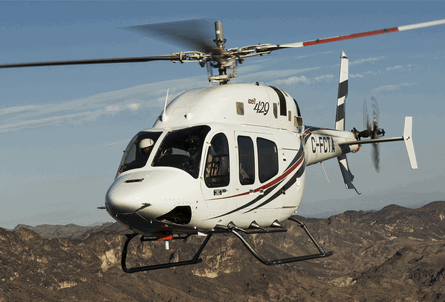For everyone who thinks of Bell as synonymous with helicopters, current market share figures make for a shock - Eurocopter controls a heavy half of the world civil market, Bell barely a fifth.
Just a few years ago those shares were roughly reversed. By value, Bell's situation looks even worse. Figures compiled by Teal Group analysts in Washington show Eurocopter and AgustaWestland lead the 2008 civil market with 38% and 34% respectively, leaving Bell third with 11%.
Bell does not dispute the figures, but how it got into this situation is a matter of debate. The Textron subsidiary is clear about how it aims to get back on top.
LOST GROUND
Mike Blake, the company's executive vice-president for customer solutions, moved to Bell from US rival Sikorsky in 2004. From a competitor's perspective, he says, Bell could be seen falling off the commercial pace compared with Eurocopter. But, he says, Bell's civil products are competitive. Where the company lost ground, he says, has been in production.
Since 9/11, Bell has seen its focus pulled to military projects to fight the war on terror, with the result that output of civil helicopters has not kept up with demand. Eurocopter, meanwhile, has been able to focus on civil production, including spare parts, another area where military demands have sapped Bell's civil capabilities.
 |
|---|
The result is that while Eurocopter turns out 600 units yearly, Bell manages just 200. "When you put out more product you gain market share," says Blake.
Last year, says Blake, Bell decided the way to increase civil output and meet its military obligations - production of the V-22 tiltrotor for the US Marines and completion of the troubled H-1 upgrades and ARH-70A programmes - was to rationalise its product range, phasing out some low-selling models such as the 210 and 430 to focus on four key models: the 206L4, 407 (now Bell's main product), 412 (which Blake calls a "workhorse") and the 429, which is heading for software finalisation and certification and first deliveries early in 2009 with a 300-plus orderbook.
The 429 is a crucial model, expected to appeal to emergency medical services operators and in size sitting between the popular Eurocopter models EC135 and EC145. Plans for 2010-12 include reaching production of 100 a year. The 407 could reach an annual output of 150, with another 45-50 412s and 25-30 206s.
 |
|---|
© Bell |
Teal Group analyst Richard Aboulafia agrees it is "good news" that management is focusing on civil products. But, he says, the military focus at the expense of civil programmes goes back 15 years, leaving it with huge challenges on the civil side.
Bell, he says, needs a success with the 429 and new technology across the range, as it is "badly behind in product range and breadth" compared with AgustaWestland and Eurocopter.
Priorities, Aboulafia says, have got to be a replacement for the 206 and "answers" to the AgustaWestland AW139 and, for corporate operators, Sikorsky S-76.
Where Bell may hold a trump card is in the tiltrotor technology behind its V-22. Blake has no short-term expectations for the BA609 civil tiltrotor, developed with Agusta, but believes the combination of vertical lift with a tripling of range and doubling of speed compared with helicopters will one day win over civil flyers - as it has the US Marine Corps - if the machines are affordable.
Affordability is a big "if" in Aboulafia's estimation. Cost, he says, means the tiltrotor, is "not quite a dead end, but in civil [applications] it's close to it".
But Blake says it was years between the advent of civil helicopters and their widespread acceptance. In the meantime, he adds, military fliers will be returning to civilian life with experience of tiltrotor capabilities and, as they did with helicopters in the 1970s, will turn that combat experience into new civil applications.
Civil tiltrotors could take 20 years to make an impact. If they do Bell's military focus may be seen as fortuitous rather than the root of its misfortune.
Source: Flight International



















